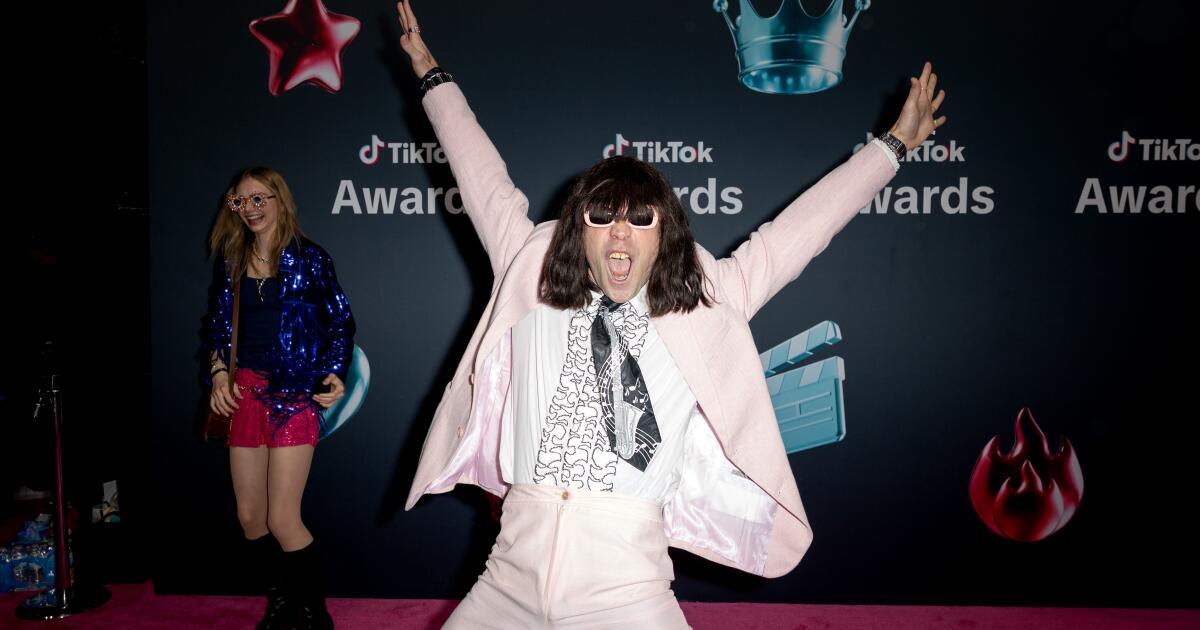Lifestyle
Tiny Love Stories: ‘You Have to Let Your Gut Lead’

The Words I’d Been Waiting For
The word “love” was not in his vocabulary. Hugs made him tense. He was critical of his children, but bragged about us to others. Near the end, I sat in his hospital room, working while he slept. I looked up to find him gazing at me, misty-eyed. “I really like you,” he said, struggling to speak and breathe. I laughed, then cried, realizing I would never hear the words I had been waiting for. Only much later did I understand that I had. — Gila Silverman
Gathering Valuables
We see flames from our porch. No mandatory evacuation — yet. But my husband and I agree. Let’s prepare. I take my parents’ wedding album. My typewritten play that only exists on paper. I scan shelves, drawers, closets. Thumbing through love letters and legal docs. Why this, and not that? Beyond practicalities, you have to let your gut lead. My husband harnesses our dog. Our cat is asleep. “Let him be,” my husband whispers. We sit, waiting. Wiggling dog on one side. Purring cat on the other. Leash and carrying case ready to gather what is most valuable. — Rochelle Newman-Carrasco
Thinking Back to the Beginning
We sat across from one another at a cafe in Indianapolis on my 50th birthday, with no idea what was to come. We were two gay men who’d collectively spent over four decades married to women. I wish I could go back and have our conversation all over again. I’d whisper to him that I was going to be his and his alone. Tell him that in just four days we’d be crazy in love. That in two months, we’d be engaged. That in eight, we’d be married, till death do us part. — Matthew Bays
‘Don’t Worry About It’
At school, my friend was talking to a boy I hadn’t met before. I decided to introduce myself. When I asked for his name, he responded, “Don’t worry about it.” Confused, I later asked my friend about the interaction. She said, “If you get to know him, he’ll tell you.” Weeks later, I heard them talking again, and she addressed him by name. Armed with this precious information, I sidled up to them and also addressed him by name. Aghast, he asked, “How do you know my name?” I told him, “Don’t worry about it.” (Now well-acquainted, we three are friends.) — Kaitlyn Borbon

Lifestyle
Fashion’s Climate Reckoning Is Just Getting Started

Lifestyle
The 2025 Vibe Scooch

In the 1998 World War II film “Saving Private Ryan,” Tom Hanks played Captain John H. Miller, a citizen-soldier willing to die for his country. In real life, Mr. Hanks spent years championing veterans and raising money for their families. So it was no surprise when West Point announced it would honor him with the Sylvanus Thayer Award, which goes each year to someone embodying the school’s credo, “Duty, Honor, Country.”
Months after the announcement, the award ceremony was canceled. Mr. Hanks, a Democrat who had backed Kamala Harris, has remained silent on the matter. On Truth Social, President Trump did not hold back: “We don’t need destructive, WOKE recipients getting our cherished American awards!!!”
Lifestyle
How to have the best Sunday in L.A., according to Keiko Agena

Keiko Agena likes to create moments of coziness — not just on Sundays, but whenever she possibly can.
“Oh, there’s my rice cooker,” she says when she hears the sound in her Arts District home. “We’re making steel-cut oatmeal in the rice cooker, which by the way, is a game changer. I used to have to baby it and watch it, but now I can just put it in there and forget it.”

In Sunday Funday, L.A. people give us a play-by-play of their ideal Sunday around town. Find ideas and inspiration on where to go, what to eat and how to enjoy life on the weekends.
The 52-year-old actor, who played music-loving bestie Lane Kim in the beloved series “Gilmore Girls,” delights in specific comforts like a bowl of warm oats, talking about Enneagram numbers and watching cooking competitions with her husband, Shin Kawasaki.
“It sounds so simple, but I look forward so much to spending time on the couch,” Agena says with a laugh.
It is time that she’s intentional about protecting, especially amid her kaleidoscope of projects. Over the last couple of years, Agena starred in Lloyd Suh’s moving play “The Chinese Lady” in Atlanta, acted in Netflix’s “The Residence,” showcased her artwork in her first feature exhibit, “Hep Tones” (some of her ink and pencil drawings are still for sale), and performed regularly on the L.A. improv circuit. And her work endures with “Gilmore Girls,” which turns 25 this year. Agena narrated the audiobook for “Meet Me at Luke’s,” a guide that draws life lessons from the series, and is featured in the upcoming “Gilmore Girls” documentary “Drink Coffee, Talk Fast.”
She shares with us her perfect Sunday in L.A., which begins before sunrise.

5 a.m.: Morning solitude
I like to be up early-early, like 5 a.m. I like that feeling of everything being quiet. I’ll go into the other room and do Duolingo on my phone. I am a little addicted to social media, so the Duolingo is not just to learn Japanese, but also to keep me from scrolling. Like, if I’m going to do something on my phone, this is better for me. I think my streak is 146. Shin is Japanese, from Toyama. So I’ve been meaning to learn Japanese for a while. For him and his mom.
Then I’ll do [the writing practice] Morning Pages. I don’t know when I learned about Julia Cameron’s book [“The Artist’s Way”] — probably around 2000. I know a lot of people do it handwritten, but I’m a little paranoid about people, like, finding it after I die. So if I have it on my computer and it’s password protected, I can be really honest.
Then a lot of times, I’ll go back to bed. Shin, as a musician, works at night, and so he wakes up a lot later. So I’ll fall back asleep and wake up with him.

9 a.m.: Gimme that bread
I don’t do coffee anymore because it’s a little too tough for my system, but I’ll walk with Shin to Eightfold Coffee in the Arts District. It’s tiny but very chill. Then we’re going to Bliss Bakery inside the Little Tokyo Market Place. We get these tapioca bread balls. If you make any kind of sandwich that you would normally make, but use that bread instead, it ups the game. It’s life-changing. The Little Tokyo Market Place is not fancy or anything, but it has everything that you would want. There’s Korean food. They have a little sushi place in there. You can get premade Korean banchan and hot food in their hot food section. They also have a really good nuts section. It’s just one big table with all these nuts, just piles and piles.

10 a.m.: Nature without leaving the city
We’ll go to Los Angeles State Historic Park near Chinatown. I like that place just because it’s very accessible. Like, they have accessible bathrooms and I’m always checking out whether a place has good bathrooms. We call it Flat Park because it’s a great walk. Like, you’re not really out in nature, but there’s a lot of greenery. You can take your shoes off and at least touch grass for a second.

11:30 a.m.: Lunch and TV cooking shows
One of my favorite salad-sandwich combos is at Cafe Dulce in Little Tokyo. A Korean cheesesteak and a kale salad. That’s always like a — bang, bang — good combo. So we might go there or Aloha Cafe, though it’s not fully open on Sundays. But I love it because I grew up in Hawaii. They have this great Chinese chicken salad and spam musubi and other Hawaiian food that is so good.
We’ll bring home food and watch something. Cooking competition shows are my cream of the crop. My favorite right now is “Tournament of Champions” because it’s blind tasting. To me, that’s the best way to do it. “The Great British Bake Off” is Shin’s favorite. He loves the nature and the accents as much as the actual cooking. He just loves the vibe, the slow pace of the whole thing.
I’m such a TV girl. I love spending time on the couch and eating a meal and watching something that’s appetizing with my favorite person in the world. I’m lucky because I get to do that a lot.

2 p.m.: Browse the aisles
I’ll go to this bookstore called Hennessey + Ingalls. I love art and architecture and design, but you can’t always buy these massive books. But you can go into this bookstore and look at them and it’s always chill.
If I have time, I’ll walk around art supply stores. Artist & Craftsman Supply is a good one. I’ll look at pens, pencils, stickers, tape, washi tape, different kinds of paper, charcoals. In my art, I try to find things that aren’t meant for that particular purpose, like little things in a hardware store that I’ll use it in a different way.

5 p.m.: Downtown L.A. in its glory
We really love to walk the Sixth Street Bridge. It’s architecturally beautiful and they’re building a huge park over there, so we’ll walk around and check it out, like, ‘Which trees are they planting? Can you see?’ We sort of dream about how it’s coming together. But the other beautiful thing about that walk is that if you go at sunset and you walk back toward downtown, it’s just gorgeous. Los Angeles doesn’t have the most majestic skyline, but it’s so picturesque in that moment.
6:30 p.m.: Cornbread and Enneagrams
I’ll head to the Park’s Finest in Echo Park. It’s Filipino barbecue. It’s just so savory and rich and a special hang. Their cornbread is really good. Oh, and the coconut beef, but I’m trying to eat less beef. They have a hot link medley. Oh my gosh, just looking at this menu right now, my mouth is watering. OK, I’ll stop.
One of my favorite things to do is ask friends about their Enneagram number. So the idea of sitting with friends over a good meal and asking them a bunch of personal questions about their childhood and what motivates them and what their parents were like and what their greatest fear is and then figure out what their Enneagram number is? That is a top-tier activity for me.

9 p.m.: Rally for improv
Because I get up so early, if 9 o’clock, I’m ready to go to sleep. But I am obsessed with improv, so on my ideal day, there’d be a show to do. There’s this place called World’s Greatest Improv School in Los Feliz. It’s tiny and they just opened a few years ago, but the vibe there is spectacular.
Then there’s another place where my heart is so invested in now called Outside In Theatre in Highland Park. Tamlyn Tomita and Daniel Blinkoff created it together and not only is the space gorgeous — I mean, they built it from scratch — they have interesting programming there all the time. They’re so supportive of communities that are not seen in mainstream art spaces. It’s my favorite place. Sometimes I’ll find myself in their lobby till 12 o’clock at night. The kind of people I like to hang around are the people that hang out in that space.
11 p.m.: Turn on the ASMR and shut down
I am firmly an ASMR girl and I have been for years. I have to find something to watch that will slow my brain down. Then it’s pretty consistent. I don’t last very long once I turn something on. My eyelids get heavy and it chills me out.
-

 Iowa5 days ago
Iowa5 days agoAddy Brown motivated to step up in Audi Crooks’ absence vs. UNI
-

 Iowa7 days ago
Iowa7 days agoHow much snow did Iowa get? See Iowa’s latest snowfall totals
-

 Maine4 days ago
Maine4 days agoElementary-aged student killed in school bus crash in southern Maine
-

 Maryland5 days ago
Maryland5 days agoFrigid temperatures to start the week in Maryland
-

 Technology1 week ago
Technology1 week agoThe Game Awards are losing their luster
-

 South Dakota6 days ago
South Dakota6 days agoNature: Snow in South Dakota
-

 New Mexico3 days ago
New Mexico3 days agoFamily clarifies why they believe missing New Mexico man is dead
-

 Nebraska1 week ago
Nebraska1 week agoNebraska lands commitment from DL Jayden Travers adding to early Top 5 recruiting class

























